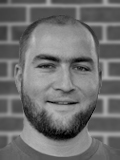GOTO Amsterdam is a vendor independent international software development conference with more that 50 top speaker and 500 attendees. The conference covers topics such as Java, Open Source, Agile, Architecture, Design, Web, Cloud, New Languages and Processes.
Michael Hunger, TweetPassionate about Software Development

Biography: Michael Hunger
Michael Hunger has been passionate about many aspects of software development even before he received his Master of CS.
He is particularly interested in the people, software craftsmanship, languages and improving code. While he likes coaching and in-project development as an independent (jexp) for small and mid-sized customers, he really enjoys the numerous other projects in his life. His family with three kids, a longtime obsession for a text based multi user dungeon (MUD), reading books whenever possible, running his coffee shop called "buchbar" (book-bar) and a workshop for printing on things are the one side. The other side is filled with learning and working with new programming languages whenever possible, listening to IT podcasts (esp. Software Engineering Radio), working on exciting and ambitious projects like qi4j.org, creating DSLs (jequel, squill and xmldsl.org), tons of refactoring and contributing to and reviewing books in progress (Martin Fowlers DSL-book, Software Apprenticeship Patterns, 97 Things Every Programmer Should Know, and many more). Sometimes he even finds time to do a bigger project with some friends like test.secretari.us, an open source e-mail based time management application.
Michael can be reached at jexp.de, mich@elhunger.de on at Twitter @mesirii.
Workshop: Data Modeling with Graph Databases Tweet
Designing and Developing a Graph Database Application:
Graphs are one of the best abstractions we have for modeling connectedness. Graph databases, in turn, are one of the best tools at our disposal for modeling, storing and querying complex, densely-connected data. Today, graphs and graph databases are helping solve some of the world's most challenging data problems, in domains as diverse as search, social networking, recommendations, datacenter management, logistics, entitlements and authorization, route finding, network monitoring, and fraud analysis.
This course teaches how to design and implement a graph database application, with a focus on designing, developing and testing a graph data model and associated queries. With a mixture of instruction and hands-on practice sessions, you'll learn how to apply the property graph model to solve common modeling problems. You'll also learn how to evolve an existing graph in a controlled manner to support new or changed requirements.
Skills taught:
- An understanding of the labeled property graph
- How to apply the property graph to common modeling problems
- Common graph structures for modeling complex, connected scenarios
- Criteria for choosing between different modeling options
- How to modify an existing model to accommodate new requirements
Prerequisites:
You will need some familiarity with Neo4j, and the Cypher language in particular.
Technical requirements
You will need your own laptop

